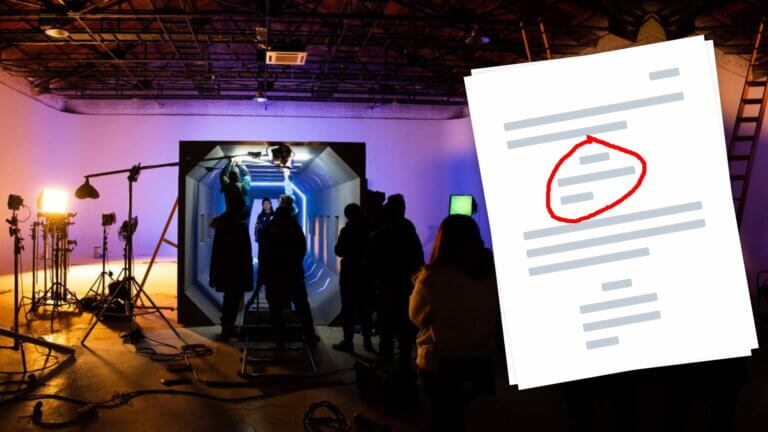When you browse for movie scripts online, you can get all kinds of results. And in these instances, what you look up online may not be exactly what you’re looking for. In some cases, what a screenwriter ends up finding is a script and not a traditional screenplay. This is how we get into the situation of screenplay vs script, where the two are similar, but not exactly the same. In this article, we are going to cover both “screenplay” and “script,” while comparing and contrasting the two. In this way you won’t have to keep asking “Is screenplay and…
Screenplays, as well as script treatments, are well known as the foundation for any movie. People in the industry also know that there are so many screenplays out in the wild that have not been produced. But what about those that are chosen for production? Well, they evolve to become shooting scripts. What is a shooting script, you ask? If you’ve been on the internet researching scripts for famous movies, it’s possible you have already seen one.There is a fine line that exists between what is a regular screenplay and what is a shooting script. We’re going to make sure…
The term “INT” is thrown around a lot in the world of screenwriting and film/television production. But what does INT mean in a script? We’re going to answer that question by defining the term. We’re also going to look at some examples from real-world screenplays! By the end, you’ll know what INT means and how to implement it in your own scripts.Continue reading What Does INT. Mean in a Script — Screenwriting 101
With new streaming platforms emerging every year and binge watching becoming an art form, the television industry needs more writers than ever. Unfortunately, there is also more competition than ever. Breaking into the TV industry can be tough, but here are the fundamentals you need to know about becoming a television show writer as well as some actionable tips that will help you get that much closer to writing for television.Continue reading Writing for Television — Format, Genre and Structure
While cinematography has the unique ability to visually draw an audience’s eye to something specific, screenwriters also have a unique tool to draw a reader's attention to a specific scene element within a screenplay. The slug line is one of the best tools a screenwriter has for drawing attention and incorporating visual elements into a screenplay. So what is a slug line and what is it used for? Let’s find out. Continue reading What is a Slug Line? Scene Heading Screenplay Formatting
The Big Lebowski script is one of the most quoted screenplays ever to be produced. Lottas ins, lotta outs. It also created some of the most beloved movie characters ever to be crafted.Continue reading The Big Lebowski Script: Characters, Quotes, and Screenplay Download
With your screenplay title page being your reader’s “first impression,” it’s easy to get intimidated by how to properly format it. Get too fancy and you could seem like you’re overcompensating for what’s inside, get too simple and you could create confusion by omitting basic information. Over the course of this article we’re going to go over some tips for putting your best foot forward and making sure your cover page is as professional and polished as the script behind it. Continue reading Screenplay Title Page Formatting Explained
Have you ever found your writing or rhetoric redundant? Using the same words and phrases over and over can make any speech or piece of writing grow stale. This is why understanding synonyms can be a life-saver. When used correctly, synonyms can add variety and interest to your writing while avoiding redundancy. Continue reading What is a Synonym — Definition, Types and Examples
Amazon Storywriter, Amazon Storyteller & Amazon Storybuilder were screenwriting tools for storytellers who wanted a cloud-based script writing option. Unfortunately, they're no longer available. But don't fret, they weren't the only game in town — there is actually a more intuitive and powerful solution out there: StudioBinder.We're going to walk you through what makes StudioBinder's screenwriting software more than simply an "Amazon Storywriter alternative" — it's an entire ecosystem of pre-production solutions.Continue reading Amazon Storywriter Alternative: Screenwriting from Script to Screen
Arguably even more than film, television relies on writers. Quite simply, without talented screenwriters, the vast expanse of TV we’re familiar with today wouldn’t exist. TV scripts are the backbone of the industry, and a great twenty-five pages can launch countless hours of beloved people, places and plots. By poring through TV script examples, you can learn the formatting, technique, and craft required to write the next great series.Continue reading TV Script Examples — Different Types, Lengths & Genres


















